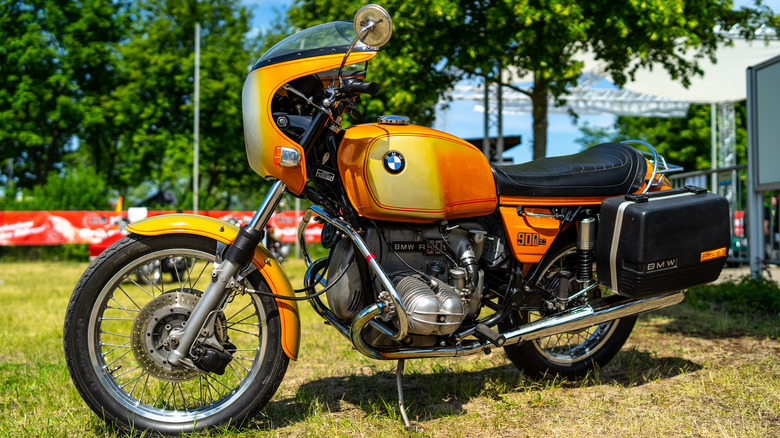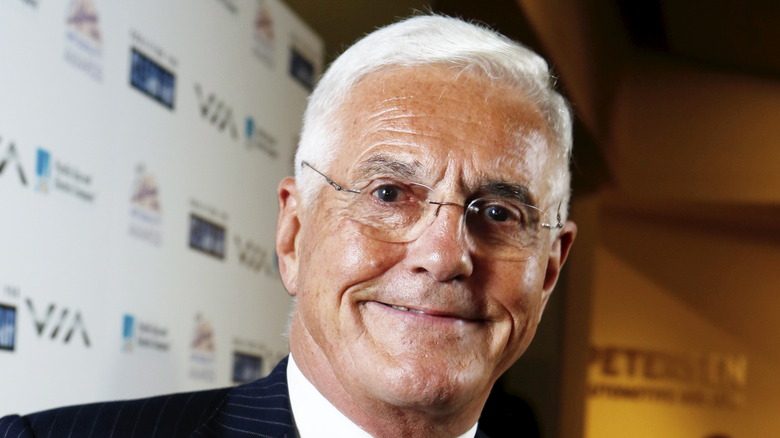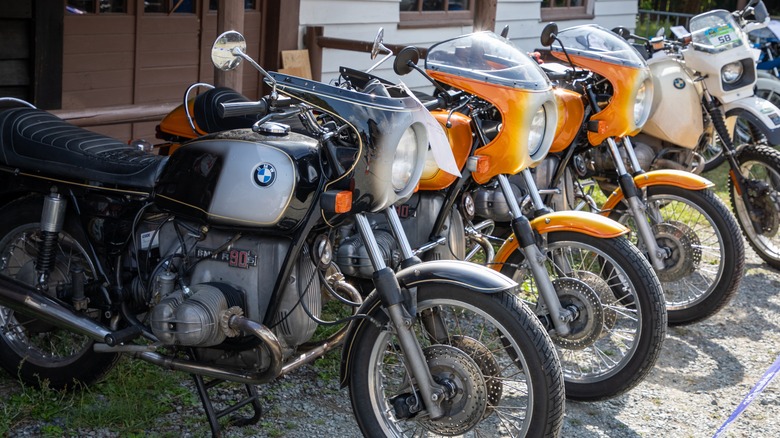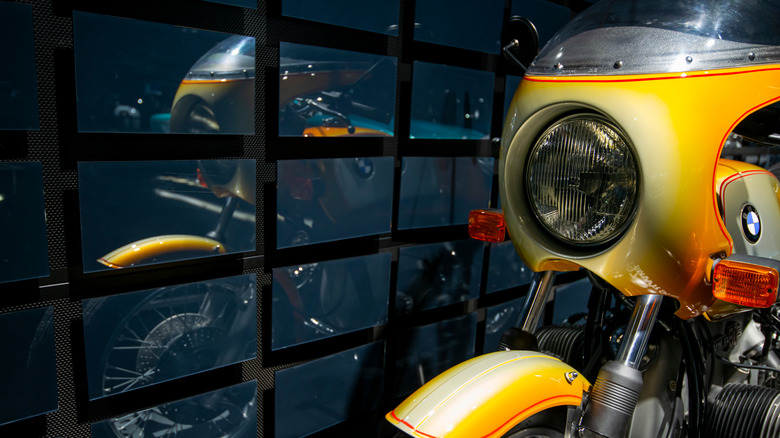How One Man's Vision Lead To One Of BMW's Greatest Motorcycles The R90S
It's intriguing to think just how much we owe to individual creatives, and how much they, in turn, may owe to pure luck or happenstance. If Isaac Newton hadn't witnessed that falling apple (supposedly in 1666), for instance, he may never have developed his law of universal gravitation. If a Marine hadn't been dissatisfied with BMW's motorcycle lineup around three centuries later, the brand may never have brought the world the R90S.
It's a dilemma that businesses of all shapes and sizes all around the world face on a daily basis: falling profits. When a brand is making money, it's crucial to maintain that momentum by continuing to deliver what customers seek. When it isn't, it's just as vital to quickly ascertain what it is that needs to change — what they should be offering that they currently aren't. The latter is exactly the situation BMW's motorcycle division found itself in when the 1970s rolled around.
Here's the story of that turbulent time in BMW's two-wheeled history, and the executive who spearheaded the creation of the iconic motorcycle, a sleek and nicely-designed BMW.
Bob Lutz recognized that BMW was in need of a particular type of motorcycle
Marine pilot Bob Lutz had an extraordinary second career in the automobile world, which spanned almost five decades. In 1986 alone, he transferred from executive vice president of truck operations at Ford to Chrysler vice president. In an August 2022 interview, according to Hagerty, the 90-year-old Lutz expressed his wish "to be remembered as the guy who tried his very best to make cars and trucks that truly delighted the customer as opposed to just giving them the bare minimum." The bare minimum, it seems, certainly wouldn't suffice for Lutz in the motorcycle world either.
Lutz said, according to Adventure Rider, that BMW's motorcycles appeared to be something of an afterthought when he arrived on the scene: "When I joined BMW in '72, the company was building about 200,000 cars annually and only 10 to 12,000 motorcycles." Demand was limited, and so were the division's profits. A lot of this, according to Lutz, was a result of a lack of focus within the motorcycle arm of the company.
As a result, and in the face of the success of the likes of the Kawasaki z1 at the time, Lutz knew that he'd have to take charge and produce something special with BMW's motorcycle division. This he certainly did.
The creation of the R90S
In the wider world of gadgets, blending style and performance can be very important. Neglecting one or the other of these areas can lead to an undesirable product, and a lack of style was one primary issue with BMW's motorcycles at the time. To fix this, Lutz brought in a known creator of eye-catching motorcycles: the designer of the Susuki Katana, Hans Muth.
Under the eye of Muth, the unique styling of the R90S took shape. Its sleek and bright design was backed up by some impressive specs: 67 bhp and a reported top speed of 125mmph were delivered by its unique 898cc engine. Coupled with features like the Dell'Orto carburettors, BMW's intentions for the model were clear: This was no hasty re-brand of an existing machine using rehashed components. The R90S was a technically impressive model that demanded attention from bikers.
It was, accordingly, a premium purchase, priced at approximately $3,400 in 1974, shortly after its debut. The British Bonneville, by contrast, was priced at £500 (GBP) at the time. What did owners get for their significant outlay? A real winner of a machine, in more ways than one.
The legacy of the R90S
Though sheer tech specs alone are impressive, a good motorcycle needs more than that. It needs the capacity to prove that those numbers on paper really translate to something on the road. One particular rider, Reg Pridmore, amply proved that. Pridmore won the world's very first AMA Superbike Championship title in 1976. He did it on what has come to be remembered as one of the world's very first superbikes: the R90S.
Pridmore said, MotoAmerica reports, "the BMW was sort of superior in its handling compared to a lot of the things I was running against. A lot of the brands were always complaining about what the front end is doing and what the back end is doing." Rather than fearsome power first and foremost, the key with the R90S seems to have been tempering those specs with the practical ability to employ them where it counted.
The R90S was followed by similar models like the R100S, but remains a true icon. In a March 2022 Bring a Trailer auction, an R90S restored by veteran model enthusiast Mark Francois sold for an astonishing $60,000. It's another fondly-remembered, iconic BMW model that was instrumental in keeping BMW's motorcycles afloat, and the world largely has Bob Lutz to thank for it.



